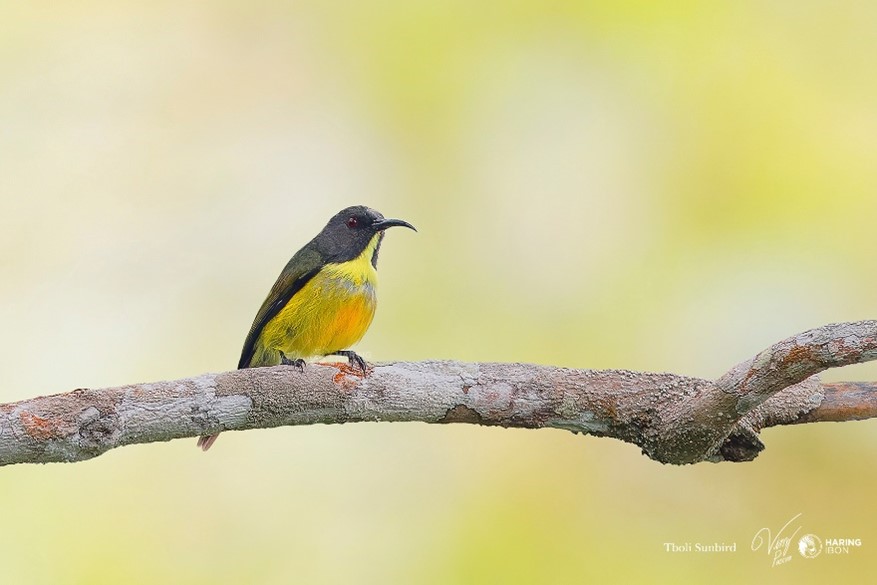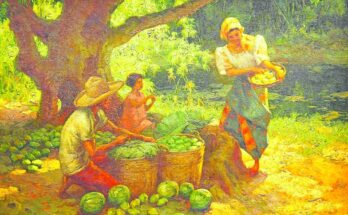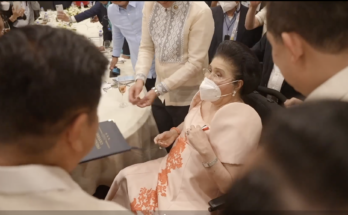BIRDWATCHING tours have long been organized by birdwatchers, but still the number of avian tour operators is very small, and most offer hard core birding that would usually require hiking for hours and not really designed for bird photography.
Let me take you to our day 6 to 8 of our birding in Mindanao:
Day 6 — Mt. Melibingoy, T’boli, South Cotabato


The mountain towering over the town of T’boli named after the indigenous natives themselves, the T’boli people, is Mt. Melibingoy with its highest peak at 1,750 meters. It has a crater named Lake Holon which formed after an eruption five centuries ago. The mountain and the lake are also known as Mt. Parker and Lake Maughan, in honor of American surveyors whose plane crashed in the site.
The scenery is the best old forest landscape that can be seen in that part of Mindanao. Big, tall trees still dominate the environment even if a highway cuts through it. There are some road slips but the road condition is better than SNA, yet the road terrain in terms of ascent and descent angles remains quite challenging. A bit disturbing too is the erosion below the road just across the habitat of the endangered Mindanao Lorikeets.

The early morning light brought us great views of Philippine Serpent Eagles, Brahminy Kites, and the Mindanao endemic McGregor’s Cuckooshrike, a species named after Australian Ornithologist Richard McGregor. After birding in the morning, we tried another road that leads to a nearby restaurant that happened to be the extension of the popular hotel in town.
There, to our surprise, we met the mother of incumbent Mayor Keo Dayle T. Tuan. She showed us the T’boli inspired accommodations and facilities, one that inspired us to book there for future birding days. The place offers serenity, breathing space in the middle of mountain ranges, and close proximity to the birding area.

The afternoon taught us that the Mindanao Lorikeets are more active before roosting in the late afternoon than after waking up in the early morning, and that they have many roosting sites. Their nests are hidden by the many orchids and mosses that adorned the tall trees, and their calls would always betray their presence. We also learned that the fruits of the vine kamang-kamang feed several bird and insect species from its infancy until its withering, a miracle fruit in the forest. Kamang-kamang’s scientific name is Heptapleurum ovoideum, the family where umbrella plants or trees belong.
Write to
Day 7 – Mt. Melibingoy, T’boli, South Cotabato



Our second day at T’boli was about perfecting what we had done in the previous day. We were more relaxed and in no hurry even if we were scheduled to go to General Santos City before noon. We had already captured our targets, so it was just the chance to make better frames.
A colorful start to our day was the Yellow-breasted Fruit-dove, which was best photographed by Ben. Afterwards, our primary target, the elusive T’boli Sunbird was finally seen and photographed this time. We also photographed mixed flocks of Stripe-breasted Rhabdornises, Philippine Bulbuls, Short-tailed Starlings, Colasisis, and Eye-browed Thrushes all feeding on clusters of kamang-kamang fruits.

Central to our ideas in T’boli is the declaration of the site, specifically the General Santos-T’boli Road traversing Mount Parker, as a protected area via local government ordinance or any other government measures. The point is not to hide in secrecy the endangered bird habitats but to let the public know that they are passing by and threading on areas sacred to the birds, being their last frontier and habitat.
In that way, commuters and the public are made aware of the importance of the area and the wildlife that thrive in it. This is quite the opposite of known and more popular frameworks where habitats of endangered species are most often hidden from public knowledge. The presence of a highway in this case dictate a different approach – that of revealing the habitat and asking the public to be aware of such, requiring due respect and carefulness in passing by and in observing and enjoying their presence.
We took our lunch in General Santos City which is about an hour’s drive from T’boli via the birding road. From GenSan, we proceeded to Davao City.
Day 8 – Eden and Malagos, Davao City


Before proceeding to Toril in Davao, we detoured to Baganihan in Marilog to see the bamboo architecture that has been mastered and taught to builders and architects. It was already late when we reached our hotel. Traffic is one remarkable thing that defined our appreciation of Davao City.


Our main consideration was to see the Whiskered Flowerpecker and the Cryptic Flycatcher, but both were nowhere to be found at the site near the foot of Mt. Talomo. The flowerpecker was sighted but was not photographed, while the flycatcher was not seen, probably because of the noise of a home-made marble air gun being fired several times by kids which might have scared them off. Oblivious to the noise were Brown Tit-babblers, Elegant Tits, and Scarlet Minivets.
Our visit at the Philippine Eagle Center became the redeeming activity of the day even if no Philippine Eagle was displayed publicly outside of the cage. Their presence and photo opportunities in cages are good enough to have some portraits that cannot be made in the wild. It was in this place where my photograph “Ang Banog” that graces the cover of the book “All the Birds of the World” was taken in 2010.
There were other raptors on display at the center and other animals as well. The place also has wild birds freely flying around. They may have been attracted by the animals in cages and by the food and security in the area. Perhaps these wild birds realized that they cannot be preyed on by the biggest flying raptor in the country as they are kept at bay. A visit to the Philippine Eagle Center brings one the opportunity to be with the Philippine Eagle up close, a chance that can not be made when seeing them in the wild. It is also a redeeming act when one miserably fails to see it in the wild.
The stores lining the entrance to the center are all selling products with Philippine Eagle portraits printed on them. Among those merchandise is the portrait of fellow birdwatcher Arnel Telesforo whose Philippine Eagle drawing became the logo and mascot of the 1st Asian Bird Fair held in Davao City in 2010 emblazoned on t-shirts, and my portraits of the Philippine Eagle printed on magnets, bottle openers and sublimation shirts. The suppliers of these merchandize really do not have an iota of respect for the creators of photographs and artwork. And it is sad to see that law enforcement is not a thing in this commerce.
Davao is the city of former President Rodrigo Duterte who reigned as mayor for about 23 years since 1986. Current Vice President and Education Secretary Sara Duterte became mayor of the city for the last six years. Both adopted the Philippine Eagle to be their symbols. The Vice President even featured my photo during her inauguration without even mentioning that such portrait is my work.
The photo at the Philippine Eagle Center also featured my photo without appropriate attribution. This is a very sad situation as most of the best photographs of the Philippine Eagle have been stolen every now and then and used without permission or even attribution to the creators and photographers. Does the status of the Philippine Eagle as the national bird give anybody the right to use its images in any commercial and noncommercial endeavors without the permission or attribution to artwork creators and photographers?
About the author: Birding enthusiast, environment advocate and a former government official.
Para sa reaksyon o komento at tanong mag-email sa [email protected]




